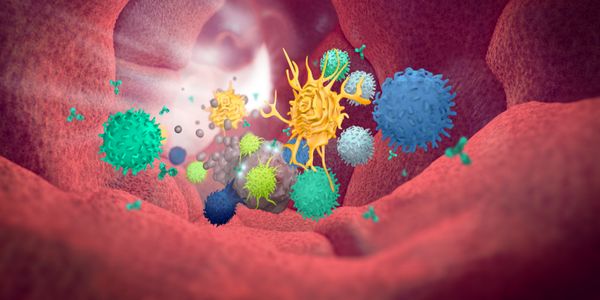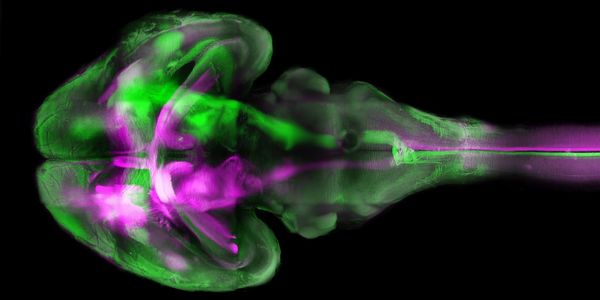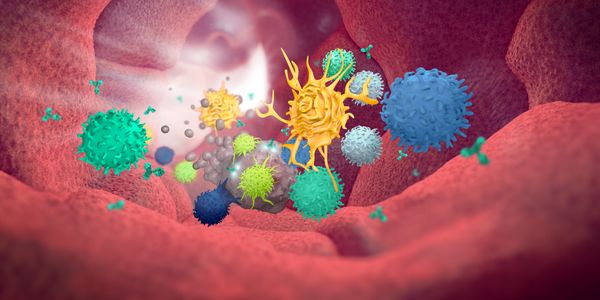Biomarkers Discovery
Biomarkers are molecules found in blood, body fluid, or tissue that denote a process or condition. Biomarkers are evaluated to see how the body is responding to a treatment or to access which treatment would be most optimal for a specific patient. Biomarker discovery describes the process of identifying new biomarkers to help promote health and well-being.
-
FEB 11, 2021 | 10:00 AMDate: February 11, 2021 Time: 10:00am (PST), 1:00pm (EST) Nanobodies are single-domain antibodies derived from heavy-chain-only antibodies (HcAbs) commonly found in camelids, consisting sole...FEB 03, 2021 | 8:00 AMDate: February 3, 2021 Time: 8:00am (PST), 11:00am (EST) This introduction webinar will provide you with an overview of the general immuno-oncology (IO) research field...DATE: January 12, 2021 TIME: 8:00 am PST, 11:00 am EST, 5:00pm CET Transferring a biologic candidate from the research and development phase to commercial production usually requires increas...
DEC 07, 2020 | 9:00 AM
Date: December 7, 2020 Time: 9:00am (PST), 12:00pm (EST) The simultaneous detection of biomarkers on tissue samples plays a fundamental role in the study of the tumor microenvironment. Multi...
DEC 02, 2020 | 8:00 AM
DATE: December 2nd, 2020 TIME: 08:00am PDT, 11:00pm EDT Bioreactors and shakers are used to cultivate microorganisms, plant, insect, and mammalian cells in different volumes. Upscaling of pr...
NOV 19, 2020 | 8:00 AM
Date: November 19, 2020 Time: 8:00am PST, 11:00am EST Monoclonal antibody-based drugs have shown great potential as a treatment for several cancers. At Miltenyi Biotec, we offer a complete wo...
NOV 18, 2020 | 8:00 AM
DATE: November 18, 2020 TIME: 08:00am PDT We develop and implement technologies to solve some of the major bottlenecks in biomedical research. In particular, we establish new imaging approac...
Visit the RoundTable Room to participate in live Q&A with all the speakers!...
Speaker:
Charalambos C. Solomides, MD
, Sara Eglitis, MS, QIHC
, Faruk Erdem Kombak, MD
, Srabani Bhaumik, PhD
, Nelson Alexander, PhD
Presented at: DISCOVERY Global User Symposium
Three-dimensional (3D) cell culture spheroids and aggregates are preferred over monolayer cell culture due to their architectural and functional similarity to solid tumors. To study expressi...
Visit the RoundTable Room to participate in live Q&A with all the speakers!...
Speaker:
Charalambos C. Solomides, MD
, Sara Eglitis, MS, QIHC
, Faruk Erdem Kombak, MD
, Srabani Bhaumik, PhD
, Nelson Alexander, PhD
Presented at: DISCOVERY Global User Symposium
Three-dimensional (3D) cell culture spheroids and aggregates are preferred over monolayer cell culture due to their architectural and functional similarity to solid tumors. To study expressi...
NOV 05, 2020 | 7:00 AM
DATE: Date needed, 2020 TIME: Time needed Exosomes are a population of naturally occurring mobile, membrane-limited, 30 – 100 nm in diameter, extracellular vesicles containing a large...
Speaker:
Jorge Escobar
, Aurélie Tacheny
OCT 28, 2020 | 7:00 AM
Date: October 28, 2020 Time: 7:00am (PDT), 10:00am (EDT) Although chemotherapy remains the mainstay of systemic therapy, a large number of cancer patients fail to respond to it. About half o...
There is an expanding list of therapeutically relevant biomarkers for non-small cell lung cancer (NSCLC), and molecular profiling at diagnosis is paramount. Tissue attrition in scaling tradi...
There is an expanding list of therapeutically relevant biomarkers for non-small cell lung cancer (NSCLC), and molecular profiling at diagnosis is paramount. Tissue attrition in scaling tradi...
OCT 20, 2020 | 9:00 AM
DATE: October 20th, 2020 TIME: 08:00am PT, 11:00am ET Tumor-associated macrophages (TAMs) are key cells in the tumor microenvironment (TME) with diverse immune functions that have a major in...
OCT 15, 2020 | 9:00 AM
Date: October 15, 2020 Time: 9:00am (PDT), 12:00pm (EDT) Renal transporters play an important role in potential clinical drug-drug interactions (DDIs) as highlighted in the FDA, EMA and PMDA...
Soluble cytokine biomarkers are the master regulators of cell-to-cell communication-- the means by which one cell tells another what to do or where to go. Determining the biomarker signature...
Speaker:
Jenny Koenitzer, PhD





















